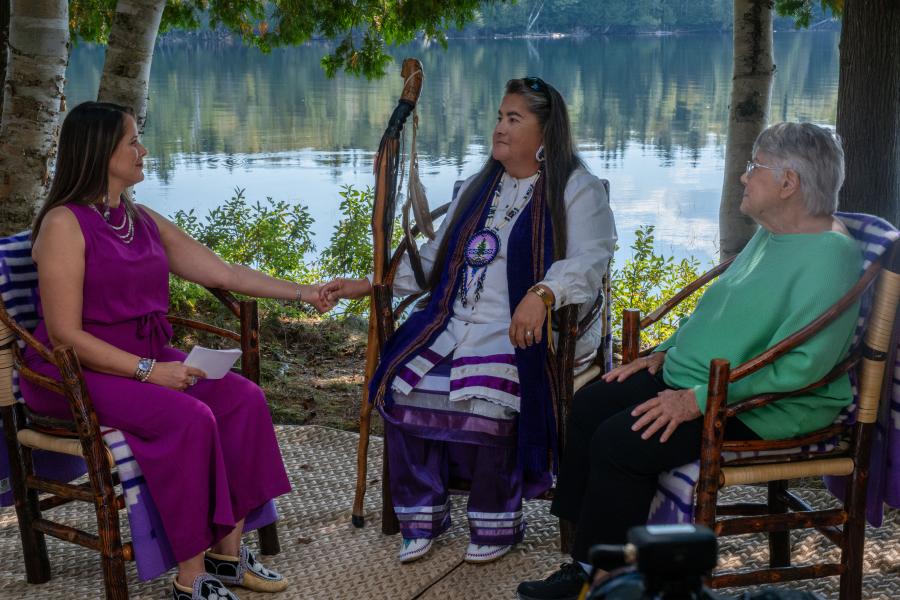The Alaska Native Health Care System is a diverse and multi-faceted system that has developed over the last 30 years. It represents many diverse organizations for Alaskan people.
Alaska has 229 federally recognized tribes that live across 586,412 square miles of predominately roadless land—the underlying reason for the creation of the innovative and essential statewide health system.
The rural Native health organizations not only serve a Native population. They are, in most areas, the only service providers available, and therefore serve everyone in the area, regardless of race. In 2000, 119,241 of the total Alaksa Native population of 626,932 were covered by the service area.1 At that time 178 village clinics employed 468 community health aide practitioners, with 32 practitioner vacancies.2 Alaska is the only state in which over 99 percent of health programs are managed by tribes and Native organizations.
Alaska Tribal Health Compact
The Alaska Tribal Health Compact, which authorizes tribes and Native health organizations to operate health and health-related programs, was formed October 1, 1994. The first three Native health organizations to sign were Norton Sound Health Corporation, Bristol Bay Area Health Corporation, and Southeast Alaska Regional Health Consortium. By January 1, 1995, 10 additional Native health organizations signed on to the compact as official co-signers. The 20 tribal health entities that have signed on to the compact to date are either tribes or consortiums of tribes authorized by the tribal councils they represent.
The compact is the umbrella agreement that sets forth the terms and conditions of the government-to-government relationship between Alaska Native tribes and Native organizations and the United States government through the Indian Health Service.Native Hospitals
The Alaska Native Medical Center (ANMC), governed by the Alaska Native Tribal Health Consortium in Anchorage, provides essential statewide health services for all Indian health beneficiaries living in Alaska. The nonprofit Alaska Native Health Corporation Southcentral Foundation governs the Primary Care Center outpatient services in Anchorage. A joint operating board was formed to assure that patients receive unified and quality-driven primary, secondary, and tertiary care services.
Seven hospitals outside Anchorage are operated by regional Native organizations: Maniilaq, Inc., operates a hospital in Kotzebue, the Yukon-Kuskokwim Health Corporation operates a hospital in Bethel, Norton Sound Health Corporation operates in Nome, the Bristol Bay Area Health Corporation operates in Dillingham, the Tanana Chiefs Conference operates in Fairbanks, the Arctic Slope Native Association operates in Barrow, and the Southeast Alaska Regional Health Consortium operates in Sitka. There are 22 regional organizations that hold seats on the Alaska Native Health Board.
The regional boards of directors consist of tribal or Indian Reorganization Act (IRA) council representatives from each village. The village councils decided to transfer their rights to operate programs, functions, services, and activities to the regional hubs in order to pool funding and lower overhead costs. The result is a more effective, streamlined, and quality-driven health system.
Alaska Native Health Board
The Alaska Native Health Board (ANHB) is the statewide voice on Alaska Native health issues. ANHB has been active for 35 years as an advocate on behalf of health needs and concerns of all Alaska Natives. It continues to emphasize the importance of self determination in health care services and encouraging wellness and healthy ways of life in Native communities.
The board of directors prepares an annual set of priority issues for consideration by the U.S. Congress and the Alaska State Legislature. The Legislative and Public Affairs Department offers services that include facilitation; coordination; information dissemination; legislative strategy; policy analysis; and preparation of position papers, issue papers, and written testimony. There are additional prevention-related programs operated by ANHB to address priority health needs for Alaskans.
The Alaska Native Health Care System is continuing to evolve. In August 2002, ANHB and its member organizations published the Alaska Native Statewide Health Plan 2002-2010.3
1. 2000 Census Counts for Alaska Natives, Alaska Area Native Health Service, July 2001
2. Community Health Aide/Practitioner List, August 2000
3. View the Alaska Native Statewide Health Plan at www.anhb.org.
Trudy Anderson is of Yup’ik and Inupiaq decent; she serves as the legislative & public affairs officer for the Alaska Native Health Board. Trudy was born in what is now the Norton Sound Health Corporation. She grew up in McGrath, along the Kuskokwim River, located in the interior of Alaska. She received a bachelor’s degree in organizational management from Alaska Pacific University and is a certified paralegal. Most importantly, she is the mother of three daughters, Rachel, Halie, and Ema.



